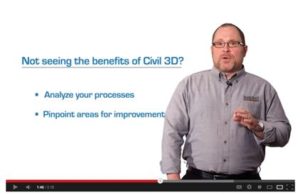A Revolution in Digital Design Is Driving a Need for Continuous Learning in Government
This interview was originially posted by GovDesignHub here.
Getting the Most Out of Your Autodesk University 2020 Experience
Article originally posted to the GovDesignHub here.
What’s the Difference Between 3D Laser Scanning and Photogrammetry?
It’s hard to imagine a world without digital. But as you look around you, much of the physical world was designed and constructed using traditional 2D blueprints and is yet to be captured in a digital format. This creates a challenge for AEC professionals to incorporate these as-built designs into re-build or renovation projects.
Traditional imaging techniques like photogrammetry aided in this process by allowing engineers to piece together photographs of as-built conditions and weave in GPS coordinates to create interactive 3D models, see below:
Video: The Pitfalls of a Non-Digital Design Workflow
Whether you’re a civil engineer, CAD manager, or anyone working on a digital design project, one thing is certain – you’re never the sole collaborator in the process. Contractors, AEC firms, field personnel, even facilities managers, have their hands in the mix too. And that creates a problem for version control and the potential for incorrect information in the field. How do you know you’re working with the most current information? If you’re using traditional non-digital workflows, it’s a problem you likely encounter once too often.
Centralize and Visualize: Army National Guard Reins In Facilities Management Data Sprawl
The role of the Army National Guard has expanded significantly since 9/11 and represents 40% of the U.S. Army’s total combat capability supporting Joint Commanders across the range of military operations around the globe.
Our 10 Most Popular CAD Blogs of 2014
Here we are again, another New Year, another opportunity to look back and plan ahead!
We’ve published over 100 articles this year, featuring insights, tips, best practices and commentary on all aspects of public sector digital design. A big thank you goes out to our stable of guest bloggers and partners, including Line//Shape//Space, Synergis Engineering Design Systems, CADD Microsystems and CADSoft Consulting.
